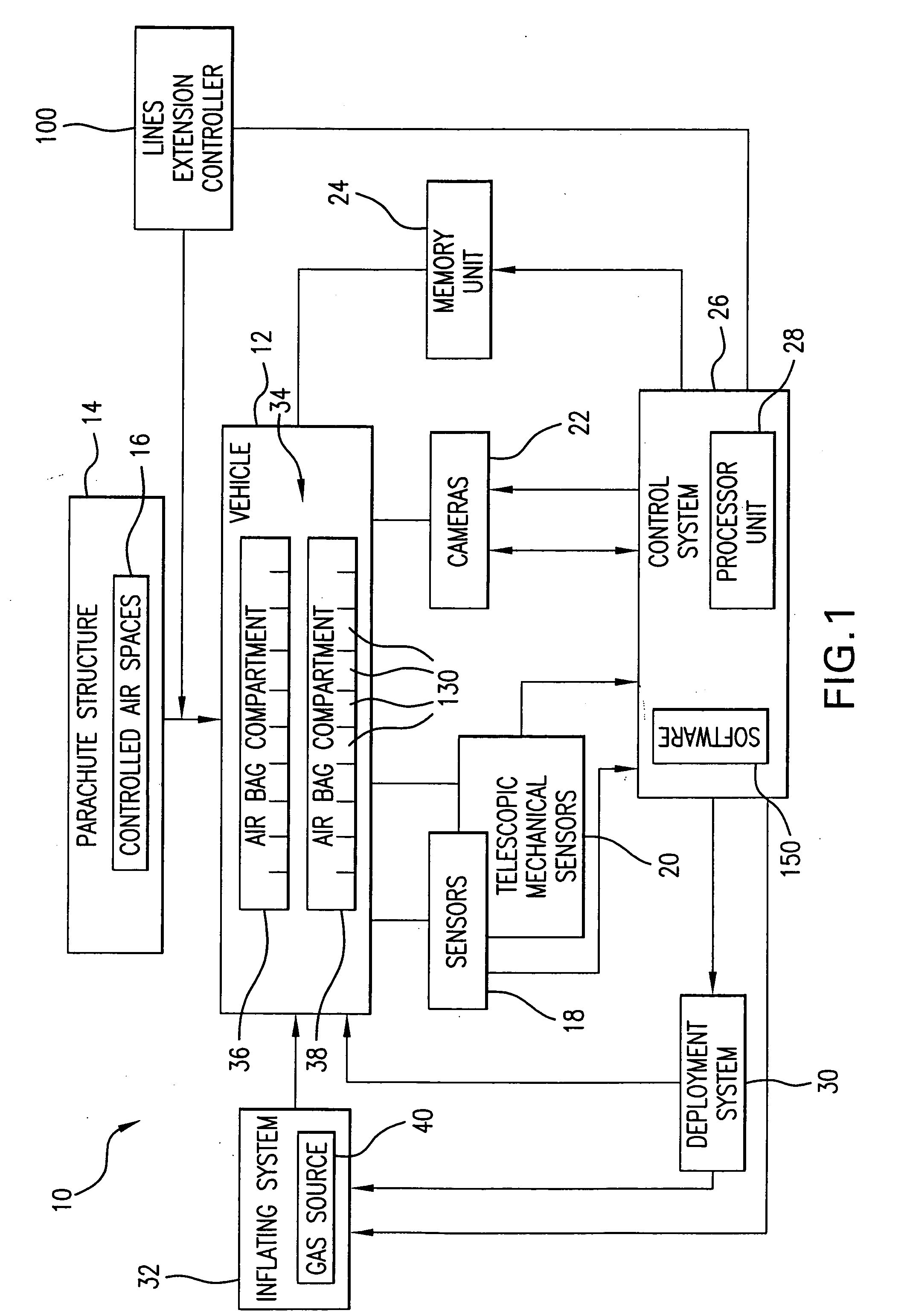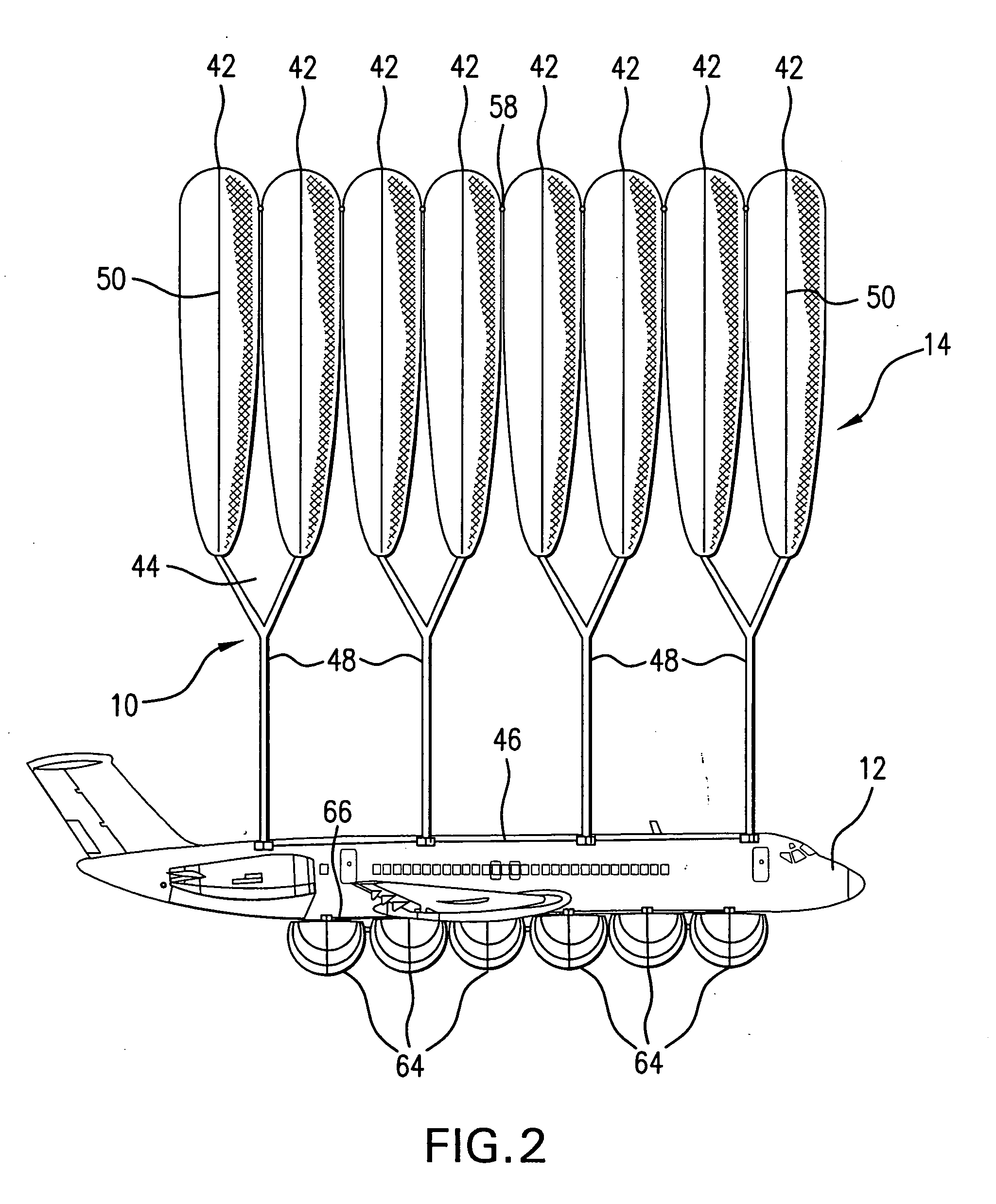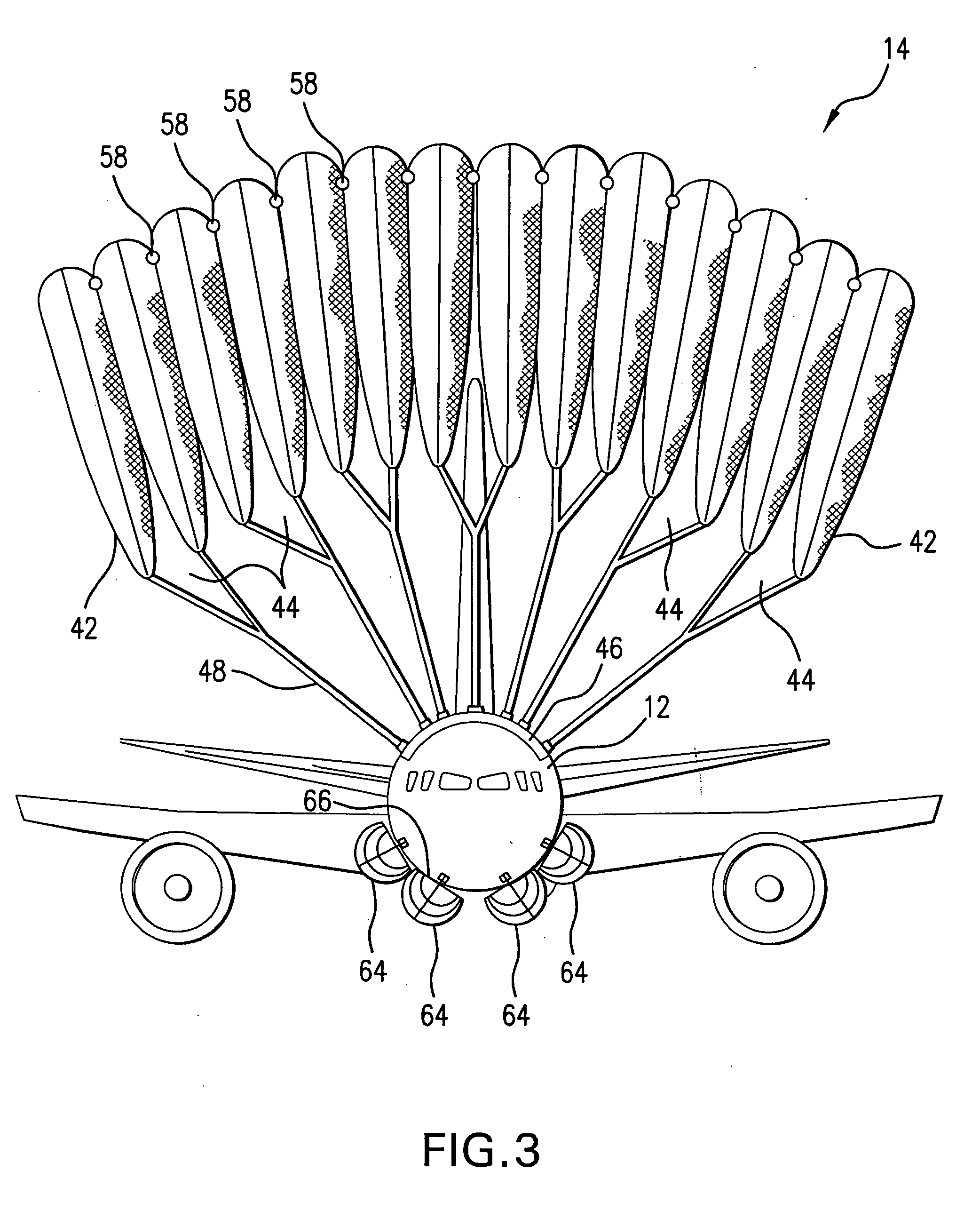Safety pre-impact deceleration system for vehicles
a pre-impact deceleration and vehicle technology, applied in the direction of aircraft ejection means, non-canopied parachutes, emergency apparatus, etc., can solve the problems of passengers' injuries and possibly deaths, difficulty in navigation of aircraft, and inability to prevent secondary impacts, so as to reduce the injuries of passengers
- Summary
- Abstract
- Description
- Claims
- Application Information
AI Technical Summary
Benefits of technology
Problems solved by technology
Method used
Image
Examples
Embodiment Construction
[0072] Referring to FIG. 1, a pre-impact safety deceleration system 10 of the present invention is installed on a vehicle 12 which in general may be a variety of conveyances, including aircraft, watercraft, as well as land vehicles. System 10 includes a parachute structure 14 which in the normal state of operation of the vehicle is positioned in a parachute compartment in the vehicle, which is deployed once an abnormal, e.g., pre-collision situation is detected. The parachute structure 14 is envisioned in several alternative forms which will be described further herein.
[0073] All of the embodiments of the parachute structure 14 of the present invention are designed to provide enhanced control of a vehicle's landing. Enhanced control is attained by controlling in a selective manner the expansion / contraction of one or a plurality of air openings (or air spaces, or orifices) 16 formed in the parachute structure 14. The directed controlled air opening(s) expansion controls the decelera...
PUM
 Login to View More
Login to View More Abstract
Description
Claims
Application Information
 Login to View More
Login to View More - R&D
- Intellectual Property
- Life Sciences
- Materials
- Tech Scout
- Unparalleled Data Quality
- Higher Quality Content
- 60% Fewer Hallucinations
Browse by: Latest US Patents, China's latest patents, Technical Efficacy Thesaurus, Application Domain, Technology Topic, Popular Technical Reports.
© 2025 PatSnap. All rights reserved.Legal|Privacy policy|Modern Slavery Act Transparency Statement|Sitemap|About US| Contact US: help@patsnap.com



